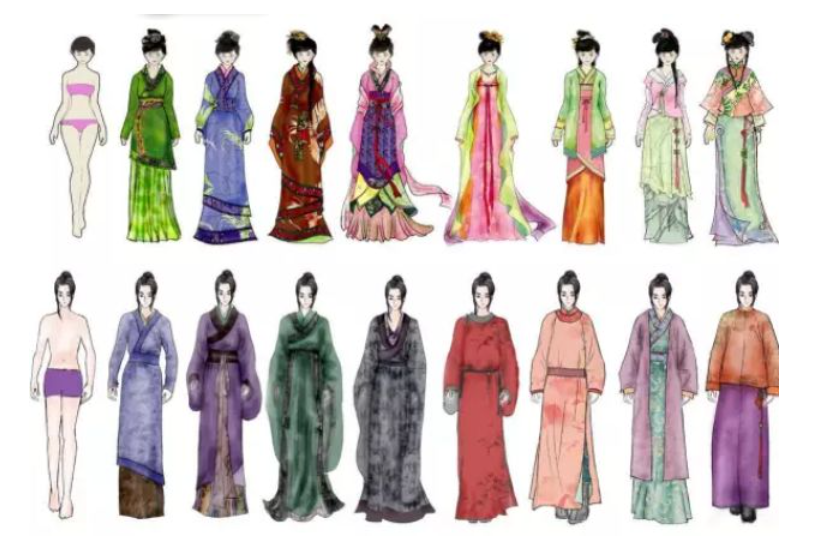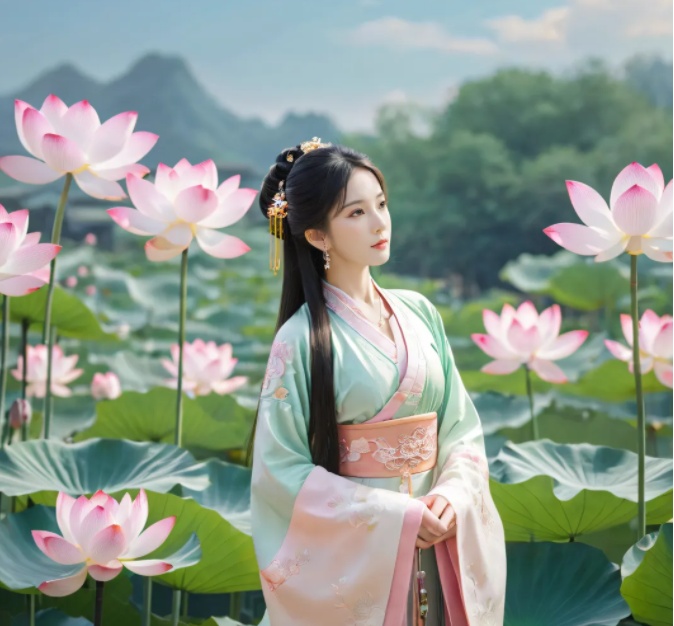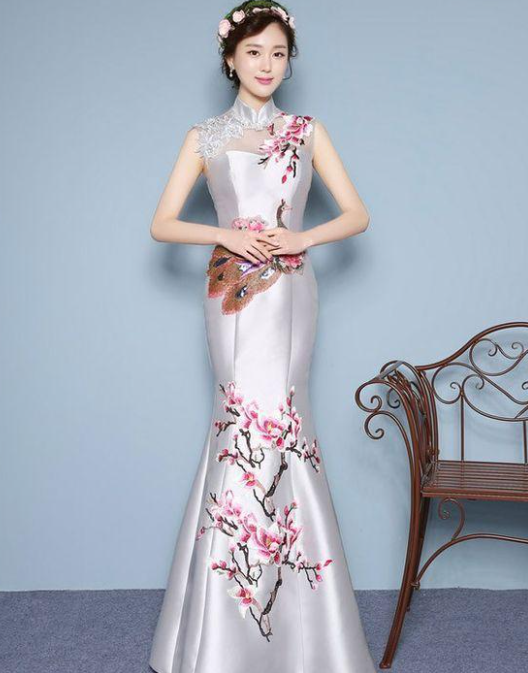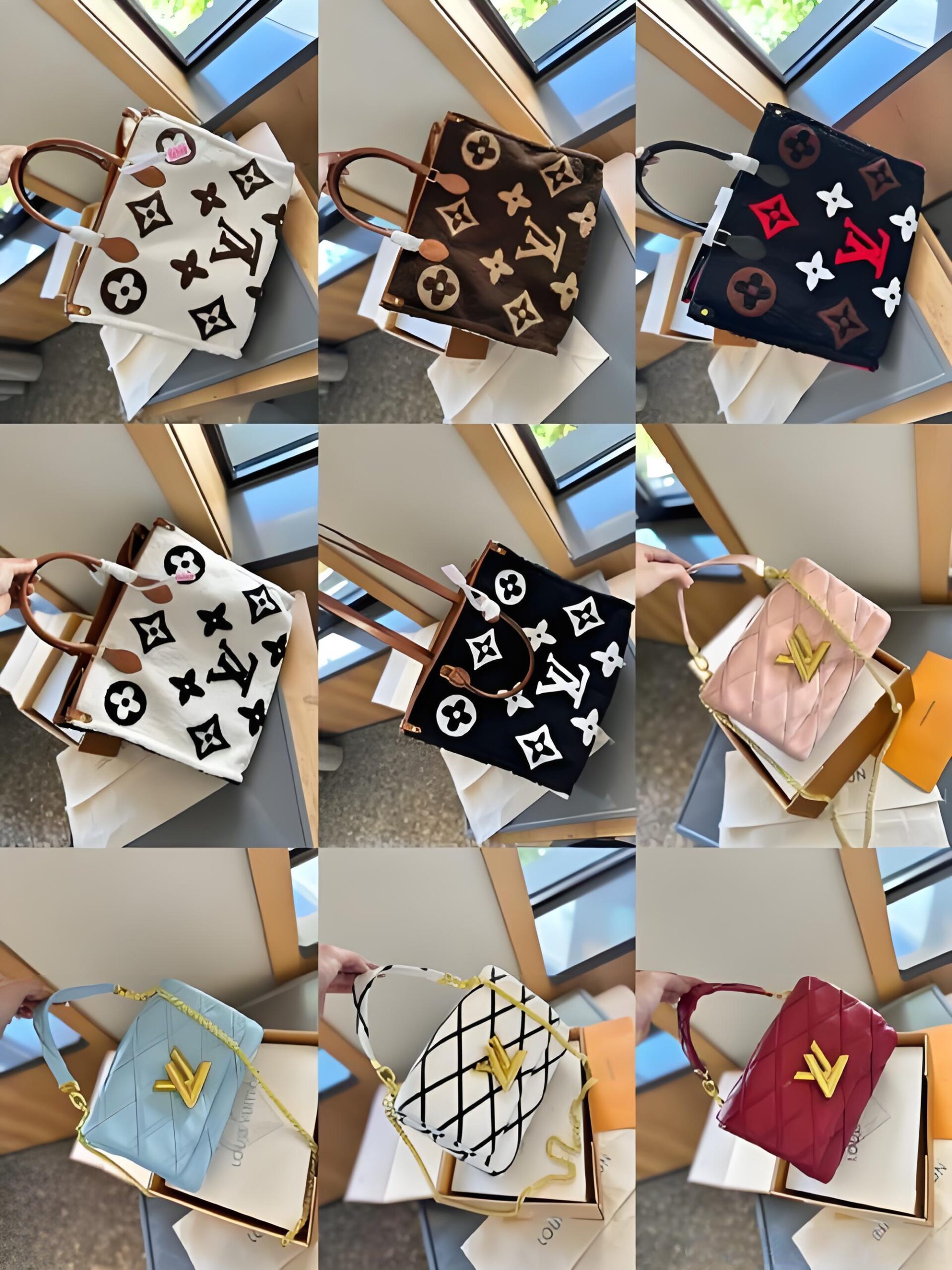Chinese clothing design is a unique and mesmerizing blend of tradition and modernity, showcasing the profound heritage of ancient Chinese culture alongside contemporary fashion aesthetics. From the intricate details of traditional costumes to the innovative expressions of modern fashion, Chinese designers have artfully balanced the old with the new, creating a distinct style that continues to captivate the global fashion industry. In this article, we will explore the evolution and impact of Chinese clothing design, highlighting the delicate fusion of traditional craftsmanship with modern trends and the cultural significance that each piece embodies.
The History of Chinese Clothing
The roots of Chinese clothing design date back thousands of years, deeply intertwined with the country’s social, cultural, and political history. Ancient Chinese clothing, known for its elegance and symbolism, varied across dynasties and regions. The Hanfu, a traditional dress for Han Chinese, is characterized by its flowing robes and elaborate patterns, representing social hierarchy and philosophical beliefs. The Tang Dynasty is renowned for its vibrant and luxurious attire, reflecting the prosperity and open-mindedness of the era. The Qing Dynasty introduced the iconic qipao (cheongsam), a more fitted dress that evolved over time to become a symbol of Chinese femininity and grace.

chinese clothing design
Traditional Chinese Clothing Styles and Features
Traditional Chinese clothing styles are distinguished by their unique cuts, patterns, and symbolic meanings. For example, the qipao is known for its high collar, form-fitting silhouette, and slits on the sides, which make it both elegant and sensual. The Hanfu, on the other hand, features wide sleeves, a crossed collar, and a long flowing skirt, often adorned with intricate embroidery and symbolic motifs such as dragons, phoenixes, and flowers. These garments are not only a testament to exquisite craftsmanship but also convey cultural values and social status.
The Influence of Modern Fashion on Chinese Clothing Design
As China opened up to the world in the late 20th century, Chinese clothing design began to incorporate global fashion trends. Designers started experimenting with new fabrics, silhouettes, and styles, blending traditional elements with modern aesthetics. This shift has led to a dynamic interplay between heritage and innovation, where classic motifs are reimagined in contemporary forms. For instance, traditional embroidery techniques are now used on modern garments like jackets, blouses, and dresses, making them more accessible and appealing to a broader audience.
The Fusion of Tradition and Modernity in Chinese Clothing
The fusion of tradition and modernity is at the heart of contemporary Chinese clothing design. Designers like Guo Pei and Ma Ke have gained international acclaim for their ability to reinterpret ancient techniques and aesthetics in a modern context. Guo Pei, often referred to as China’s first haute couture designer, is known for her opulent creations that draw inspiration from imperial robes and traditional Chinese art. Ma Ke, on the other hand, emphasizes simplicity and sustainability, using natural materials and traditional craftsmanship to create minimalist yet profound designs. These designers exemplify how Chinese clothing design can honor the past while embracing the future.

chinese clothing design
Famous Chinese Clothing Designers and Their Unique Approach
Several Chinese designers have made a significant impact on the global fashion stage. Apart from Guo Pei and Ma Ke, designers like Wang Tao, founder of the brand Taoray Wang, and Zhang Da, known for his brand Boundless, have also been at the forefront of innovation in Chinese clothing design. Wang Tao is celebrated for her modern interpretation of the qipao, which combines the dress’s traditional elegance with contemporary tailoring. Zhang Da’s work, which often features deconstructed silhouettes and unconventional materials, challenges conventional notions of fashion, reflecting a modern, avant-garde approach to Chinese clothing design.
The Role of Chinese Clothing in the Contemporary Fashion Industry
Chinese clothing design has become a significant influence in the contemporary fashion industry, both within China and internationally. The global popularity of the qipao, for example, has made it a staple in both high fashion and everyday wear. Chinese fashion weeks in Beijing and Shanghai have become important events on the international fashion calendar, showcasing the country’s growing influence. Moreover, the increasing collaboration between Chinese designers and Western fashion houses highlights the growing appreciation for Chinese aesthetics and craftsmanship.
Chinese Clothing Design Techniques and Craftsmanship
The techniques used in Chinese clothing design are as varied as they are ancient. Traditional methods such as embroidery, silk weaving, and dyeing play a crucial role in creating the elaborate patterns and textures that define Chinese fashion. These techniques are often passed down through generations, with each region developing its own distinct style. For example, Suzhou is renowned for its silk embroidery, while the Miao ethnic group is known for its elaborate silver adornments and batik patterns. By integrating these traditional techniques into modern designs, Chinese clothing designers create garments that are not only visually stunning but also rich in cultural heritage.

chinese clothing design
Chinese Clothing Design Trends and Innovations
In recent years, Chinese clothing design has seen a surge in innovation, with designers experimenting with new materials, technologies, and forms. There is a growing trend towards sustainable fashion, with designers focusing on eco-friendly fabrics and ethical production methods. The rise of tech-infused fashion, such as garments with LED lights or smart fabrics, is also pushing the boundaries of traditional design. Moreover, the increasing influence of streetwear and youth culture has led to the emergence of hybrid styles that blend traditional Chinese elements with contemporary, urban aesthetics.
The Future of Chinese Clothing Design
The future of Chinese clothing design lies in its ability to continue evolving while staying true to its cultural roots. As designers push the boundaries of creativity, they will undoubtedly find new ways to merge tradition with innovation. The global fashion industry’s increasing recognition of Chinese clothing design not only reflects the growing influence of Chinese culture but also signals a new era where the rich tapestry of Chinese heritage is celebrated in diverse and modern ways. Whether through the revival of ancient techniques or the exploration of cutting-edge trends, Chinese clothing design will continue to inspire and captivate fashion enthusiasts around the world.










